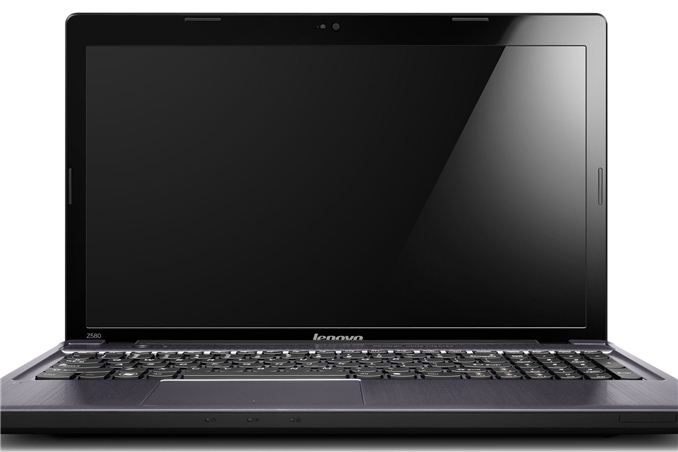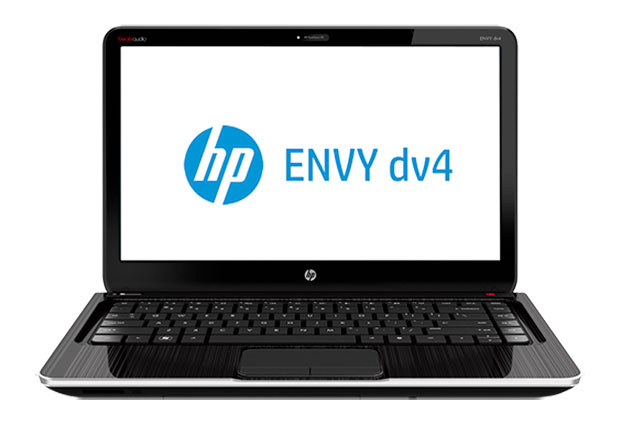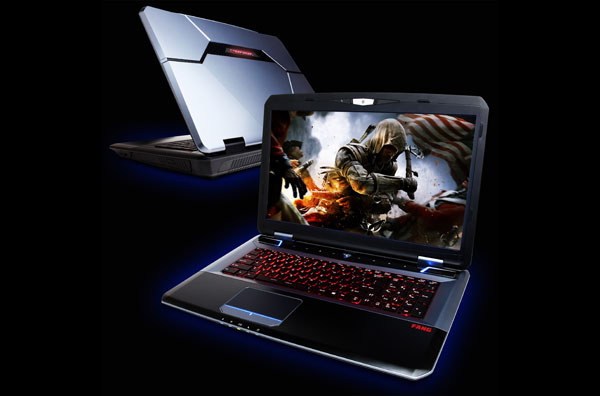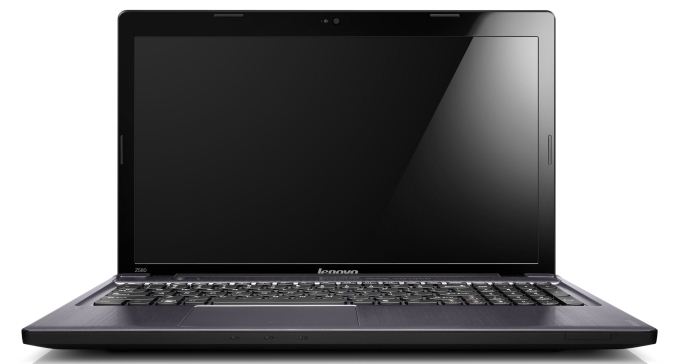Best Gaming Notebooks, April 2013
by Jarred Walton on April 12, 2013 4:57 PM EST
For this week’s update of our laptop/notebook recommendations, we turn our eye towards the mobile gaming sector—and no, we’re not including tablets in this category, even though they can play games; we’re talking about Windows games played natively on your notebook. Just to set the stage, let me give a few thoughts on the general idea of gaming notebooks.
First, if you’re the type of gamer that wants to set everything at maximum quality and you’re not willing to turn down a few knobs, you’re either going to spend a ton of money (e.g. for GTX 680M SLI) or you’re going to be disappointed—and eventually, you’ll need to opt for lower quality settings on some new titles, as it’s only a matter of time before we see our next GPU-killer Crysis game. Think about that for a moment: Crysis was originally released way back in 2007 when DX9 was relatively new, and here we are in 2013 and there are still many GPUs that can’t run Crysis at 1080p at maximum quality and get more than 60FPS.
The first point is important, but even if you’re willing to compromise on some settings, you probably don’t want to compromise too much. While it’s possible to play almost any game on a moderate GPU, I find the bare minimum GPU to be around the level of AMD’s HD 6630M/6650M (aka HD 7570M, more or less) and NVIDIA’s GT 640M LE. If possible I’d want more GPU performance, especially if you’re running higher than 1366x768 for your resolution. So, for example, AMD’s entry-level A6-4455M and its HD 7500G don’t make the cut for “gaming” in my book, and even the faster A10-4655M with HD 7620G is questionable for many titles.
Finally, there’s the question of GPU vendor, and mostly I’m talking about mobile drivers. I wish I didn’t even have to discuss this, but my experience with AMD’s Enduro is still leaving me wanting compared to NVIDIA’s Optimus. These days it’s difficult to find a notebook with a discrete GPU that doesn’t implement one of those technologies, and while there are people that have no real complaints with Enduro, I’m not one of them. AMD right now seems to be best for iGPUs from Trinity (and soon Richland), and while something like the 7970M can offer great performance in the right games, in the wrong titles it can be a pain.
Finally, let’s not forget that there are new GPUs, CPUs, and APUs just around the corner. If rumors are to be believed, Intel’s GT3e solution (the “e” is for embedded DRAM) may provide some healthy competition to GPUs like the GT 650M and HD 7730M. Driver support is a concern there, sure, but Intel has definitely improved their driver compatibility over the past year since HD 4000 launched, and doubling performance (or more) would go a long way towards making their iGPU viable. AMD and NVIDIA meanwhile will have 8000M and 700M parts, with some rebranding/recycling and minor clock speed changes. AMD will also have Richland APUs that are supposed to be at least 10% faster than Trinity, and at the right price such a solution could be really attractive. If you can wait until June or so, we’ll know who the winners and losers of the next round are, but we’ll have an updated “Best Gaming Notebooks” by then.
TL;DR (Too Long; Didn’t Read): I’ll give a few lower-end recommendations for those on a serious budget, but my real preference for notebook gaming would be at least a Radeon HD 7730M or a GeForce GT 650M—with GDDR5 memory in both cases. Those two GPUs provide enough graphics horsepower to handle every game I can think of at 1366x768 and medium or higher detail settings, and in many cases even 1920x1080 at medium settings will be playable. If you want 1920x1080 with high quality settings (and possibly 4xAA), and you’d really like frame rates of 60FPS or more, you’ll have to go all-in on an HD 7950M or GTX 675MX at the very least.
Budget Gaming Notebook: Lenovo IdeaPad Z585 ($580)
We’re in familiar territory here, as the best way to get acceptable gaming performance without breaking the bank is AMD’s A10-4600M APU. I discussed this category last week as well, so I’ll keep things short. You can get the Toshiba L850D with A10-4600M, 4GB RAM, and 640GB HDD for $540, direct from Toshiba. For just a bit more (and likely quicker shipping), Newegg has Lenovo’s IdeaPad Z585 for $580 with the A10-4600M, 6GB RAM, and a 1TB hard drive. HP’s dv6z is similar as well, but pricing starts at $600 with the A10 APU. Of those three, at least with the current pricing I’d take the Lenovo IdeaPad Z585. Even if Richland shows up next month at a similar price (doubtful), you’re only losing out on the ~10% higher clock speeds of the A10-5750M.

Midrange Gaming Notebook: HP Envy dv4t-5300 ($705)
Considering we’re only looking at $100 more (give or take) than the budget notebook, the HP Envy dv4t is a great value. For that price, you get a dual-core Intel i3-3120M (2.5GHz), GeForce GT 650M 2GB, 4GB RAM, and 500GB HDD. The last two specs are underwhelming, sure, but it’s cheaper to just go buy 8GB of laptop memory rather than paying HP an additional $100 to do the upgrade for you! What’s more intriguing to me personally is that this is a 14” laptop instead of a 15.6” chassis, and I personally find a lot to like in the 14” form factor. The dv6t-7300 is there for you if you prefer 15.6” screens, and you get a $150 upgrade option for a 1080p anti-glare LCD if you’re interested. With similar specs it’s actually the better buy, as $750 will get you 8GB RAM and a 750GB HDD, along with the Core i5-3230M CPU.
Higher-End Gaming Notebook: Lenovo IdeaPad Y500 ($1100)
I’ll be honest: I’m not a big fan of SLI or CrossFire in notebooks. The combination of dual GPUs in a small enclosure is a recipe for lots of heat and poor battery life. That said, while a single GT 650M isn’t amazingly fast, two of them in SLI should perform quite admirably—roughly somewhere in the GTX 670MX to 675MX range—and you should be able to play most games at High settings and 1080p (but not “Ultra” settings, at least not in the most demanding titles). Lenovo is so far the only company I’m aware of to do SLI with a GK107 GPU, and it’s definitely an interesting tactic. The Y500 comes with a reasonable feature set (1080p LCD, backlit keyboard, Core i7-3630QM, 16GB RAM, and a 1TB HDD) and build quality, and it’s available starting at $1100. For this level of performance, $1100 isn’t a bad price, but if you want better battery life and Optimus (note that the Y500 does not support Optimus—a decision made by Lenovo and not a limitation imposed by NVIDIA or SLI), you’ll need to spend more money.

High-End Single GPU Gaming Notebook: CyberPowerPC Fang III X7-100 ($1400)
For $300 more than the Lenovo, you can get CyberPowerPC’s branded version of the MSI GT70, the Fang III X7-100. Dustin reviewed a similar laptop with the iBUYPOWER Valkyrie and found it to be a reasonable alternative to the large Clevo and Alienware offerings. The extra money will get you a larger chassis, a single GTX 675MX 4GB GPU (which should be 10-20% faster than the GT 650M SLI—and more in cases where SLI doesn’t scale well), Optimus support, and a good 1920x1080 LCD. You also get 8GB RAM and a 750GB HDD, so Lenovo wins out in those two areas. If you don’t like the look of the MSI chassis, or if you just prefer Clevo, you can of course get similar configurations of the P150EM and P170EM for roughly the same price.
For those that simply want all-out maximum performance, you can get higher performance configurations of the above. I wouldn’t bother with the Radeon HD 7970M personally, as the extra $100 doesn’t make up for the sometimes flaky driver support from AMD, which currently leaves the GTX 680M as the only other option. That adds around $300 to $400 to the price of the MSI, iBUYPOWER, or Clevo offerings (take your pick—CyberPowerPC currently doesn’t have a GTX 680M configuration). It also brings Alienware’s M17x into the picture, which I still find to be the best looking of the bunch with my preferred keyboard layout, but even with 6GB RAM and a 500GB HDD (the minimum Alienware has in their configuration utility) the M17xR4 will set you back $2249 when equipped with the GTX 680M.
Really, not much has changed with any of these notebooks since the GTX 680M launched last June. While I wouldn’t expect any major updates with 700M (maybe a GTX 780M that will bring GTX 680MX clocks to a lower TDP part?), buying right now instead of waiting for the Haswell and 700M updates seems a bit odd at the top of the performance pyramid. Thus, while all of the above are potential options depending on your personal taste, I’d personally hold off spending more than $1500 on a soon-to-be-outdated laptop, and really even $1400 is a stretch.
As always, other options or opinions are welcome in the comments. Think I missed a great option? Let me know! We’ll be back again next week where I’ll scour the thin-and-light market for good 13.3” and 14” offerings that don’t fall into the Ultrabook/Ultraportable category.












63 Comments
View All Comments
Tams80 - Saturday, April 13, 2013 - link
Unless your after specific configurations, such as RAID 0, then the lack of an SSD is a mute point. These aren't laptops that have soldered drives, so you can easily replace the HDD with an SSD. In fact, for most of them there probably are options for them to come with SSDs, but in almost all cases, you'd be silly to pay the premiums demanded.ShieTar - Saturday, April 13, 2013 - link
Yeah. I did replace the HDD in my current Notebook by an SSD. Wanted to reinstall Windows from the recovery DVD provided by ASUS, and was informed that "This version can not be installed on this computer, only on the Notebook you got it with."So, not only did I buy a mechanical harddrive I did not want, I also bought a crippled Windows-License that is now useless for me.
So for my next Notebook I'd much rather buy it exactly as I need it.
will54 - Saturday, April 13, 2013 - link
I had the same problem with my g75vx with win 8. I had to clone the drive than properly align the partitions which sent me to the error screen so I than had to reset it to factory and now it works. It was a pain but it's much quicker and I still have the 1TB drive for movies and pics.JCDNWarrior - Saturday, April 13, 2013 - link
Excellent article, nice information to have as to what laptop seems to be a good buy for this month. Saves a lot of time.I however want to vent a pet peeve I've had ever since Crysis 1 came out. It was simply really badly optimized on release, by which I mean, the game ran slower and required more of the system than it should, since with the Ultra High Config mod (let alone other lighting mods for further eye candy without performance decrease) I could play the game's Very High settings just fine on a Intel E8400 at stock speed and Geforce 8800 GT on a P5Q Pro motherboard very properly around 30 FPS, only the first part of the first snow level forced medium settings to play well.
As such, in a perfect world, I'd really like every site that uses Crysis 1 as a benchmark/playthrough bench to apply that mod first. Then again, similarly the same could be said about mods that improve performance in games such as Skyrim.. slippery slope..
JarredWalton - Saturday, April 13, 2013 - link
Crysis Warhead was better optimized but still runs only marginally faster than the original at similar settings. Anyway, my main point is that there are games out there that will punish your GPU, and if you buy something that's good for 1080p and Medium settings there will inevitably be a game released that you want to play that will force you to lower your resolution and/or your settings -- and it always seems to happen sooner rather than later in my experience. Basically, if you're really into gaming and you want to play on a laptop, I'd suggest saving up for the fastest GPU you can reasonably afford or risk a Battlefield 3 or Crysis or Metro 2033 that simply can't be run well without seriously reducing the graphics quality.will54 - Saturday, April 13, 2013 - link
What happened to the 680M in the fangbook. A month ago I checked them out and they had the 680M for $230-250 more than 675mx. The Fangbook 100,200 or 300 has the one option (675mx) but I just read a review of it with the 680M.JarredWalton - Sunday, April 14, 2013 - link
Probably lack of inventory or sales. 675MX is actually pretty close in performance I think, and it uses less power, making it a potentially better balanced solution overall.kogunniyi - Sunday, April 14, 2013 - link
I have the chance to buy an m17x r4 with the 7970m for cheaper than a Clevo with the same hardware. This includes the prices of extended warranties on both. (With the 680m, it would be ~$150 more than the Clevo and MSI barebones.) Would you recommend it?Also, has Anandtech benchmarked the m17x r4 with the 7970m (Intel GPU disabled)?
JarredWalton - Sunday, April 14, 2013 - link
Interestingly, I have one that I'm playing with. Turning off the HD 4000 doesn't actually seem to work all that well for me. I got some screen corruption and other anomalies, so I turned Enduro back on -- though perhaps I missed some option for switching? I just used the keyboard shortcut.Anyway, I think the M17x is the best built of the bunch, and personally I like the keyboard and aesthetics, but it's not perfect by any means. When it works right, 7970M is quite fast...but the 5-10% of the time when it goes wrong can be really frustrating.
NeoAks007 - Monday, April 15, 2013 - link
I have recently purchased M17x-R4 with 7970M. Works fine with HD 4000 disabled but sometimes weird artifacts show up on screen (random triangles or black and white squares/rectangles - Catalyst 13.3 beta). More of a annoyance but nothing serious. Playing Crysis 3 with very high settings at 4xMSAA@1080p gives around 30 FPS on average.Ignoring the excellent build quality and awesome AlienFX enabled keyboard, I do find some issues with this rig:
1. Too heavy and looks fat. I do believe that the design is now couple of years old and needs to be reviewed and toned. I prefer sleeker designs like Razer Blade and this is nowhere near that.
2. If you push GPU to limits, this laptop gets ready to take off like a fighter jet. Fan gets super angry and very noisy (as if it is complaining) as soon as temp hit 60 degrees (C) which can be disturbing on occasions.
3. Super Glossy screen is awkward for darker images/videos. You don't need mirror to do your hair as this screen takes care of that. You can even see your reflection on this screen with all lights turned off in room when video gets dark.
4. Alienware thinks that only millionaires buy M17x when you see their prices of Memory and other upgrades. Base config is at a decent price in my opinion considering sturdy build quality, but memory and disk upgrades do not make any sense for price being charged (prefer to upgrade RAM/SSD on your own).
Nevertheless, you'll love and hate it. Keyboard is really great with AlienFX (looked very strange in beginning but as you get used to it, you will start appreciating it). Trackpad is bit weird but again who won't use a mouse on a gaming machine. Screen is good except for darker tones described above. And performance? On par with the elites!
4.